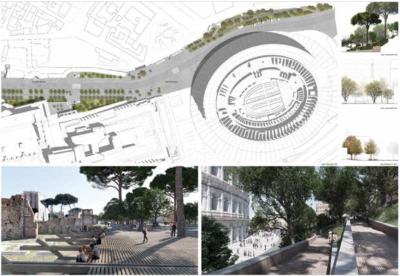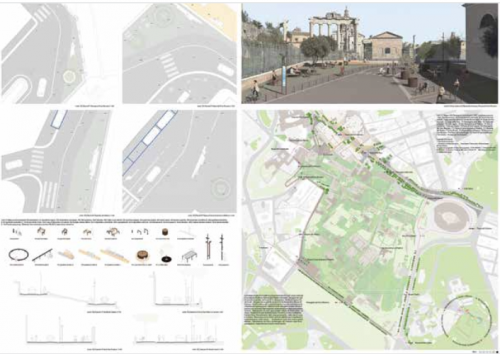A stroll through ancient history - Eternal City remakes radically its archaeological heart

ROME -- Rome is planning the most radical re-imagining of its monumental heart since the city became the capital of a united Italy in 1871. Part of the transformation involves the creation of a “New Archaeological Pathway” linking major monuments, from the Colosseum to the Forum and from the Baths of Caracalla to the Circus Maximus.
The mayor of Rome, Roberto Gualtieri, and the culture minister, Gennaro Sangiuliano, presented the winning bid for the design of the central Rome walkway, which is intended to give better access to the forum, improve visitors understanding of what they are seeing and create attractive spaces for Romans and tourists to linger in.
“There will be a three-kilometre path ringing the main monuments and facilitating access to the archaeological area,” said Francesco Isidori, one of the heads of the Labics architecture studio, whose design was chosen by a jury of experts from among 23 international submissions.
Access to the path, which in many cases will overlook the monuments, will be free, while walkers will be able to descend to numerous ticketed entrances to the archaeological sites, Isidori said.
Much of the path will be paved with wood, making it easy to dismantle, if necessary, and it will include green spaces, seating, displays of contemporary art, and spaces appropriate for staging small events. “The forums were part of a system of large open spaces that were interlinked. We want to help people to understand that fact,” Isidori said.
The flanks of the Oppian Hill, overlooking the Colosseum, will be turned into a panoramic promenade from which to enjoy the view over the gigantic amphitheatre that has been a symbol of the city for 2,000 years.
The anonymised proposals were selected by a jury of five experts led by the Portuguese architect Joao Luis Carrilho da Graça. “The winning design is really extraordinary. It introduces ecological elements and reveals the extraordinary force of the Roman ruins,” Da Graça said, appearing by video link at a press conference on a terrace overlooking Trajan’s Forum.
Sangiuliano, the culture minister, said experts had been discussing how best to display the vestiges of ancient Rome since at least 1655. “This is just the beginning. Culture is an element of the spirit that makes us better, as well as boosting the economy. Enjoying social relations in the course of a beautiful walk makes us more human, and less of a bar code,” he said.
The archaeological pathway is expected to cost around 19 million euros, part of a programme of 282 million euros to be spent on structural improvements to the centre of the capital between 2025 and 2027.
A key element of the pathway project is improvements to the Via dei Fori Imperiali, the broad road built by Benito Mussolini linking Piazza Venezia to the Colosseum. Use of the road is currently restricted to buses and taxis, but the mayor said it was unlikely to become pedestrian-only until a new underground line linking the two ends of the street has been completed.
“The project will make the area more beautiful, more user-friendly and more comprehensible. Via dei Fori will become a big boulevard not prevalently devoted to automobile traffic,” Gualtieri said.
Walter Tocci, a local politician who has advised the mayor on the project, said the aim was to rediscover enchantment at the ancient heart of the city. “This path is a cognitive work that enables people to see the area as a system. Currently it is broken up into single monuments. Soon people will be able to appreciate the context,” he said.
Ideally, Rome’s residents would rediscover the ancient forums and use them as public squares in the contemporary city, Tocci wrote in a proposal for the mayor. “Today Romans have abandoned these places because they consider them definitively consigned to mass tourism. But if residents return to frequent them, they will become the marvellous spaces of our daily lives, and consequently they will be more fascinating and more accessible for tourists as well,” he wrote.
Gualtieri said he expected parts of the pathway to be completed by next year’s Jubilee celebrations organised by the Catholic Church and likely to draw huge crowds to the city. Isidori was less sanguine. Asked about the timing, he laughed: “Rome is not known as ‘the eternal city’ for nothing.”
pw

© COPYRIGHT ITALIAN INSIDER
UNAUTHORISED REPRODUCTION FORBIDDEN


